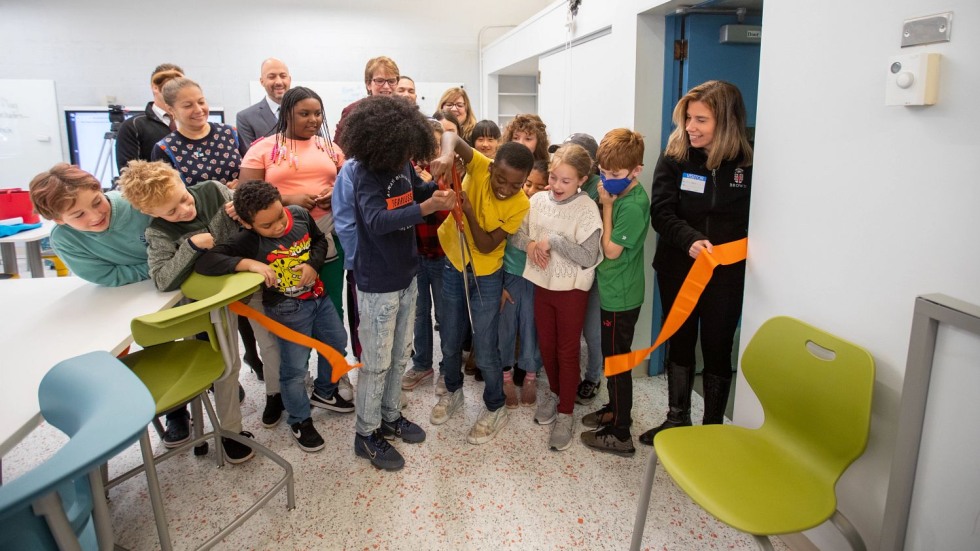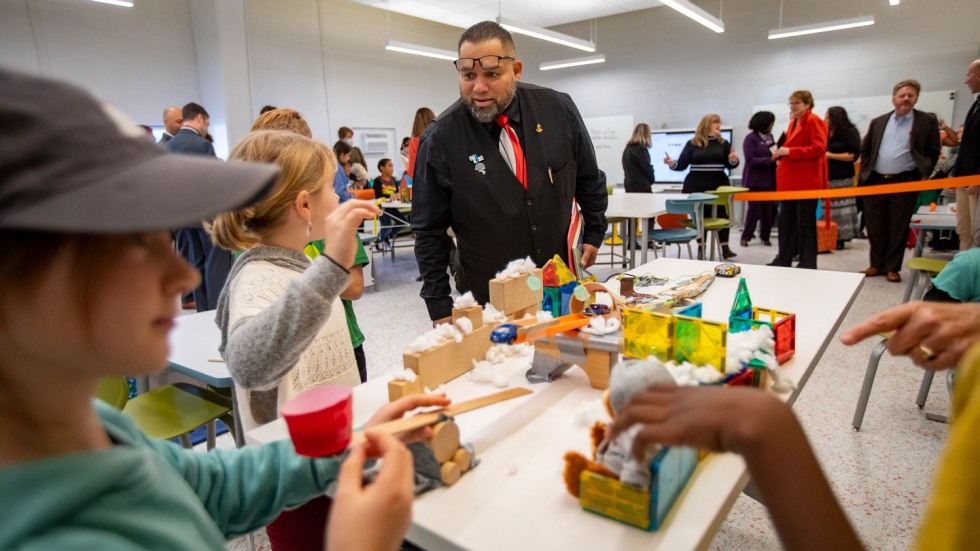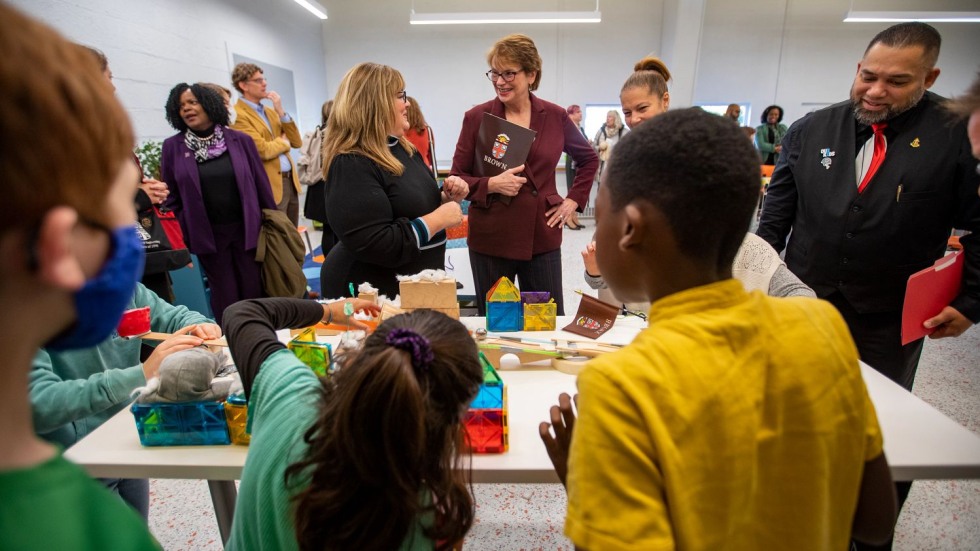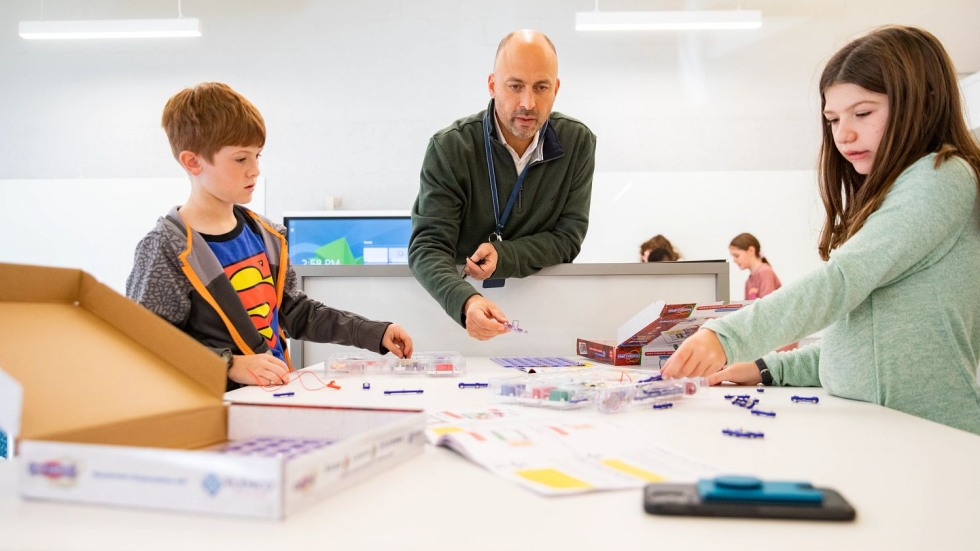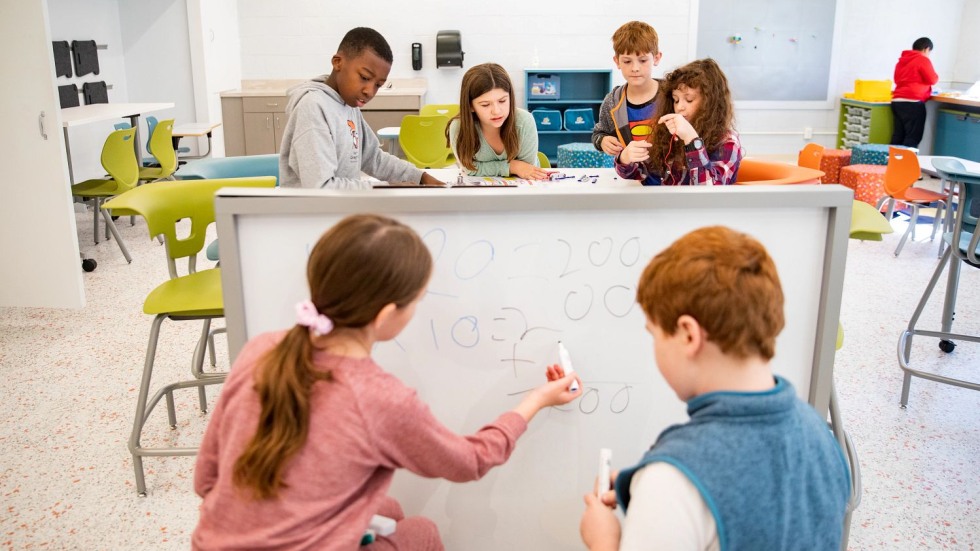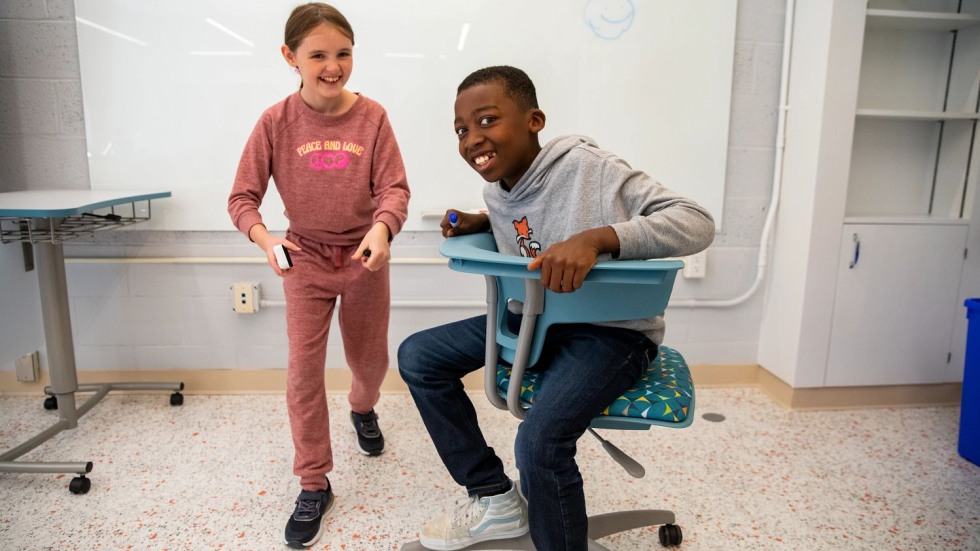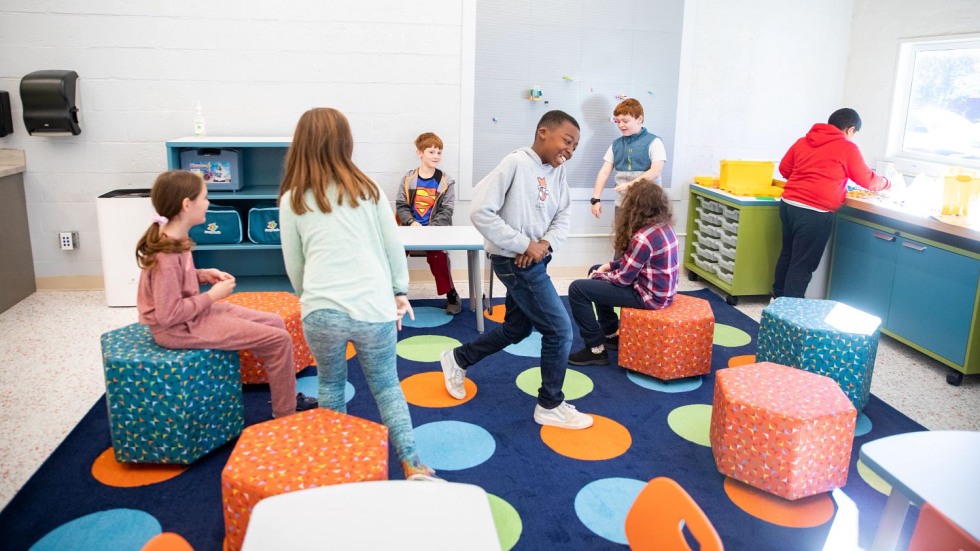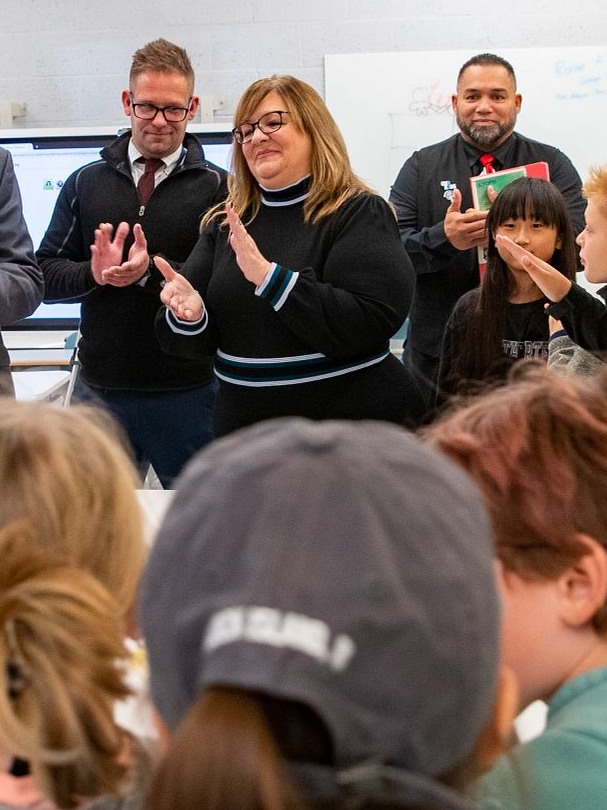PROVIDENCE, R.I. [Brown University] — Robot-building, LEGO-stacking, microscopy, crafting — inside an innovative new learning space at Vartan Gregorian Elementary School built with financial support and partnership from Brown University, all of those activities and more are now possible.
On Friday, Oct. 28, the Providence public school formally opened its new “STEAM Room,” where students from kindergarten through fifth grade can get immersed in interactive, hands-on experiments and projects that mix science, technology, engineering, arts and math — or STEAM for short.
A year ago, the space was an empty third-grade classroom with outdated linoleum floors, green tiling and limited natural light. Thanks to a productive collaboration between staff at Brown and Vartan Gregorian Elementary, it is now a bright, dynamic space sure to inspire creativity in teachers and kids, said Matthew Russo, the school’s principal.
“Now we have a real live space in which all students can come and be inspired… and actively engage,” Russo said. “We’re so happy and so thankful to have it, and we just know our students are going to love this space.”
At a spirited, celebratory event on Friday morning, Russo welcomed state and city education leaders, colleagues from Brown and Vartan Gregorian Elementary — and more than a dozen fourth and fifth graders who enjoyed a break from other studies to engage in a creative engineering challenge: raising a Brown flag using at least three simple machines and no fewer than six chain reactions.
Brown President Christina H. Paxson said the University’s support for the project came as part of a decades-long partnership between Brown and the Fox Point elementary school, which is located just a few blocks from campus. Throughout the 1990s, the late Vartan Gregorian — then Brown’s president — considered it his “adopted” school, partnering with educators and local leaders to expand its resources and physical footprint, connect students with tutoring and mentoring, and host school-wide enrichment activities. The school was renamed in Gregorian’s honor in 1997.
“It’s hard to do complicated things yourself — you really need to have other people around you,” Paxson said during Friday’s ribbon-cutting, drawing a parallel between the students’ collaborative engineering projects and the enduring partnership between Brown and Vartan Gregorian Elementary. “And I have to say, making this project happen was the result of teamwork… [involving] people at Brown, people outside Brown, and then of course… the people who work in the school and are so excited about everything [they] do.”
